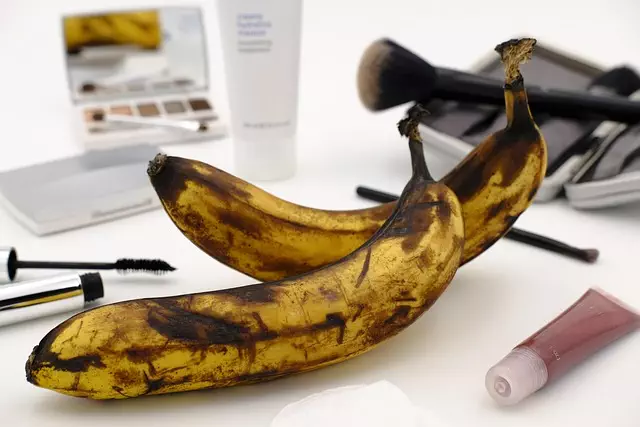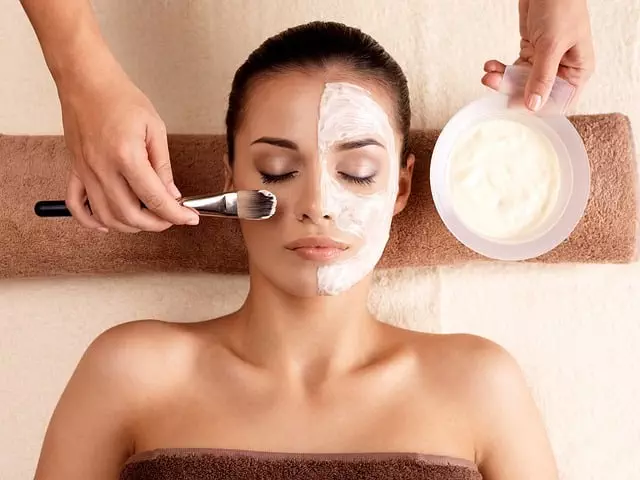The text provides a comprehensive guide to understanding wrinkles, their causes (collagen degradation, elastin breakdown), and types (dynamic vs static). It explores tailored anti-aging treatments, from topical retinoids and chemical peels to dermal fillers and non-invasive methods like hydration, sun protection, and at-home treatments. Key active ingredients such as Retinol, Vitamin C, and Hyaluronic Acid are highlighted for their wrinkle-reducing properties. The cosmetic industry's advancements in technologies like Intense Pulsed Light (IPL), Radiofrequency (RF), and Artificial Intelligence (AI) are also noted, emphasizing the future of precise, personalized anti-aging treatments. Consulting a dermatological expert is recommended to select the best treatment plan based on individual skin needs.
Uncover the secrets to achieving youthful skin with our comprehensive guide on targeted wrinkle reduction. Understanding the causes and types of wrinkles is the first step, followed by exploring the science behind innovative anti-aging treatments. From popular skincare ingredients to advanced cosmetic procedures, we demystify effective methods. Learn about non-invasive options, lifestyle adjustments, and how to choose a tailored treatment plan for radiant skin. Embrace these strategies as your personal journey towards defying gravity and reclaiming your youthful glow.
Understanding Wrinkles: Causes and Types

Wrinkles, a natural sign of aging, are lines or folds on the skin that can give away a person’s age. Understanding their causes and types is crucial when considering effective anti-aging treatments. The primary reason for wrinkles is the gradual breakdown of collagen and elastin fibers in the skin, which support its elasticity.
There are several types of wrinkles, each with distinct characteristics. Dynamic wrinkles appear temporarily when facial muscles contract, such as during smiling or frowning. Static wrinkles, on the other hand, are permanent and occur due to prolonged exposure to environmental factors like sun damage or smoking. Knowing these nuances is essential for selecting appropriate anti-aging treatments tailored to individual needs.
The Science Behind Targeted Wrinkle Reduction

The science behind targeted wrinkle reduction focuses on understanding and manipulating specific cellular processes that contribute to skin aging. Skin is composed of various layers, each with unique functions, and wrinkles form due to a combination of factors like collagen degradation, elastic fiber breakdown, and loss of skin elasticity. Anti-aging treatments aim to address these issues by stimulating the production of youth-promoting proteins, such as collagen and elastin, which are essential for maintaining skin structure and firmness.
Advanced technologies, including peptides, growth factors, and specialized delivery systems, play a crucial role in targeted wrinkle reduction. Peptides, for instance, can signal cells to enhance collagen synthesis while protecting existing collagen from degradation. Growth factors, like human growth hormone (HGH), stimulate cellular repair mechanisms, encouraging the regeneration of healthy skin cells. These innovative approaches not only help minimize visible wrinkles but also improve overall skin texture and tone, leading to a more youthful appearance.
Popular Anti-Aging Treatments: A Comparison

In the quest for youthful skin, numerous anti-aging treatments have emerged, each promising remarkable results. One popular option is topical retinoids, derivatives of vitamin A, known for their ability to stimulate collagen production and reduce fine lines. Retinoids are widely accessible and have a strong scientific backing, making them a go-to choice for many. However, they can cause initial irritation, requiring users to start with lower concentrations and gradually increase.
Another favored method is chemical peels, which involve applying acid solutions to the skin to remove damaged layers. This process encourages the growth of new, smoother skin. Peels offer significant results but may not be suitable for all skin types and require professional administration. Dermal fillers, on the other hand, provide instant volume enhancement by injecting hyaluronic acid or other substances into deep facial lines and wrinkles. While they offer a temporary solution, touch-ups can maintain their effectiveness for up to two years, making them a convenient choice for those seeking immediate improvement.
Non-Invasive Methods for Youthful Skin

Achieving youthful skin doesn’t always require invasive procedures. There are numerous non-invasive methods that focus on reducing wrinkles and signs of aging naturally. One popular choice is regular hydration, using moisturizers to keep skin supple and pliable, which can help minimize fine lines and wrinkles over time. Another effective approach is sun protection—a daily habit that’s crucial for preventing further damage and slowing down the aging process. Sunscreen applications shield the skin from harmful UV rays, reducing the risk of premature wrinkles and age spots.
Additionally, certain topical creams and serums containing active ingredients like retinol, vitamin C, or peptides have gained popularity as anti-aging treatments. These components stimulate collagen production, enhance skin elasticity, and help smooth out existing wrinkles. Many people also turn to at-home facial routines, including gentle exfoliation and mask treatments, to promote skin turnover and reveal a more radiant complexion.
Effective Active Ingredients in Skincare

In the quest for youthful skin, effective active ingredients in skincare play a pivotal role in successful anti-aging treatments. Key components such as Retinol, Vitamin C, and Hyaluronic Acid have garnered significant attention for their ability to target wrinkles from multiple angles. Retinol, a derivative of vitamin A, stimulates cell turnover, encouraging the production of collagen and elastin, which are essential for skin firmness and elasticity.
Vitamin C, a powerful antioxidant, protects the skin against environmental damage, reduces hyperpigmentation, and promotes collagen synthesis. Meanwhile, Hyaluronic Acid, known for its hydrating properties, plumps up fine lines and wrinkles by binding to water molecules in the skin, enhancing its moisture retention capacity. These active ingredients, when combined in the right formulations, offer a comprehensive approach to wrinkle reduction, contributing to a more youthful and radiant complexion.
Lifestyle Changes for Radiance

Adopting a radiant and youthful complexion goes beyond topical creams; it’s deeply intertwined with your overall lifestyle. Implementing anti-aging treatments effectively requires a holistic approach that nurtures both your skin and general well-being. One of the most impactful changes you can make is prioritizing hydration, both internally and externally. Staying adequately hydrated by drinking ample water throughout the day supports skin elasticity and overall health.
Additionally, embracing a balanced diet rich in antioxidants, vitamins, and minerals acts as a powerful anti-aging treatment. Nutrient-dense foods like berries, leafy greens, and healthy fats not only protect your skin from environmental damage but also promote collagen production, resulting in reduced wrinkle visibility. Pair this with consistent exercise, which improves blood circulation, enhances nutrient delivery to the skin, and boosts its natural radiance, for a comprehensive approach to targeted wrinkle reduction.
Advanced Technologies in Cosmetic Procedures

The world of cosmetic procedures is constantly evolving, driven by advancements in technology and a deeper understanding of skin physiology. One of the most prominent areas of focus in contemporary dermatology is targeted wrinkle reduction, with an array of advanced technologies now available to combat signs of aging. From intense pulsed light (IPL) therapy, which uses specific wavelengths of light to stimulate collagen production, to radiofrequency (RF) devices that heat the dermis to promote skin tightening, these innovative treatments offer effective solutions for a youthful complexion.
Additionally, the integration of artificial intelligence (AI) and machine learning has further refined anti-aging interventions. These technologies enable precise analysis of facial structures, allowing practitioners to tailor treatments with greater accuracy. As research continues to advance, so too does our arsenal of anti-aging weapons, promising more effective and personalized approaches to achieving a radiant, wrinkle-free appearance.
Choosing the Right Treatment Plan

Selecting the perfect anti-aging treatment is a personal journey, tailored to individual skin needs and goals. It’s crucial to understand that one-size-fits-all approach doesn’t work when it comes to targeted wrinkle reduction. The first step involves assessing your skin type and the specific concerns you wish to address—whether it’s fine lines, deep wrinkles, or loss of elasticity.
Consulting a dermatological expert is highly recommended. They can guide you through various options, including topical creams with retinol or peptides, chemical peels, microdermabrasion, or even advanced procedures like Botox or filler injections. Each treatment has its own benefits and suitability, so choosing the right plan ensures optimal results without compromising skin health.
